Polish orders in Russia
For centuries, for example, such an enemy has been for Russia (and it remains to be, what is there to breed diplomacy!) Poland. History the rivalry of the two largest Slavic peoples is not, however, our today's topic - we will talk about some benefits gained from long-standing hostility.
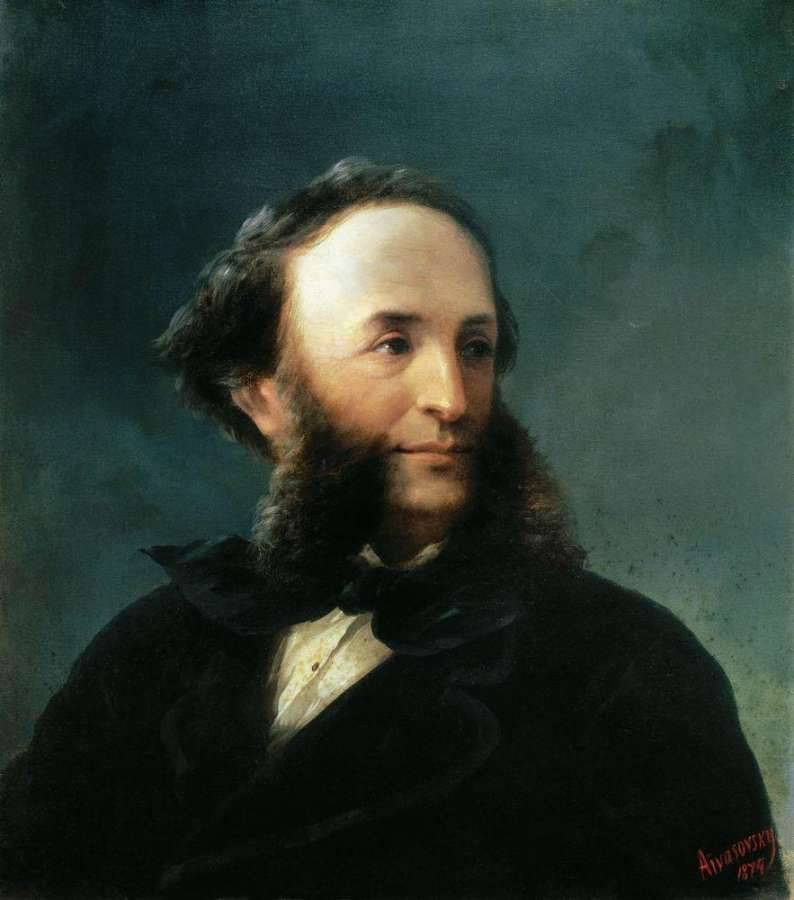
By the beginning of the 18th century, the Commonwealth, which had been terrifying all Orthodox Russia a century ago, had clearly given way to the Eastern European leadership of the Russian monarchy modernized by Peter. Poland has lost the ability to resist, but the former status of a great power has turned many heads. One of them was the Saxon Elector Frederick Augustus, who became Polish King Augustus II in 1697 year.
In 1705, he established the Order of the White Eagle, which had a single degree, and granted them four of his confidants. It is interesting that at the same time four Russian subjects received the award: “Alexashka” Menshikov, Prince Anikita Repnin, Scottish native Baron Georg Benedikt Ogilvi (all three are Field Marshal generals, some in the future, and some already then). The fourth from Russia became, not to be at night be remembered, hetman Ivan Mazepa.
And the next year, the king, as if mocked by fate, officially nicknamed Strong, lost his throne. It was then that Order's diplomacy helped: less than three years later, like the Russians, having defeated the Swedes, they returned Augustus to a shaky throne. Three years later, in 1712, Peter and August exchanged orders: the All-Russian autocrat laid upon his Polish counterpart signs of the Order of St. Andrew the First-Called, and he, in turn, adorned the winner’s chest under Poltava with the White Eagle. The tradition continued in the following decades, including during the last Polish king, the protege of Catherine II (and her lover) Stanislav Poniatowski, to whom we return in the future.
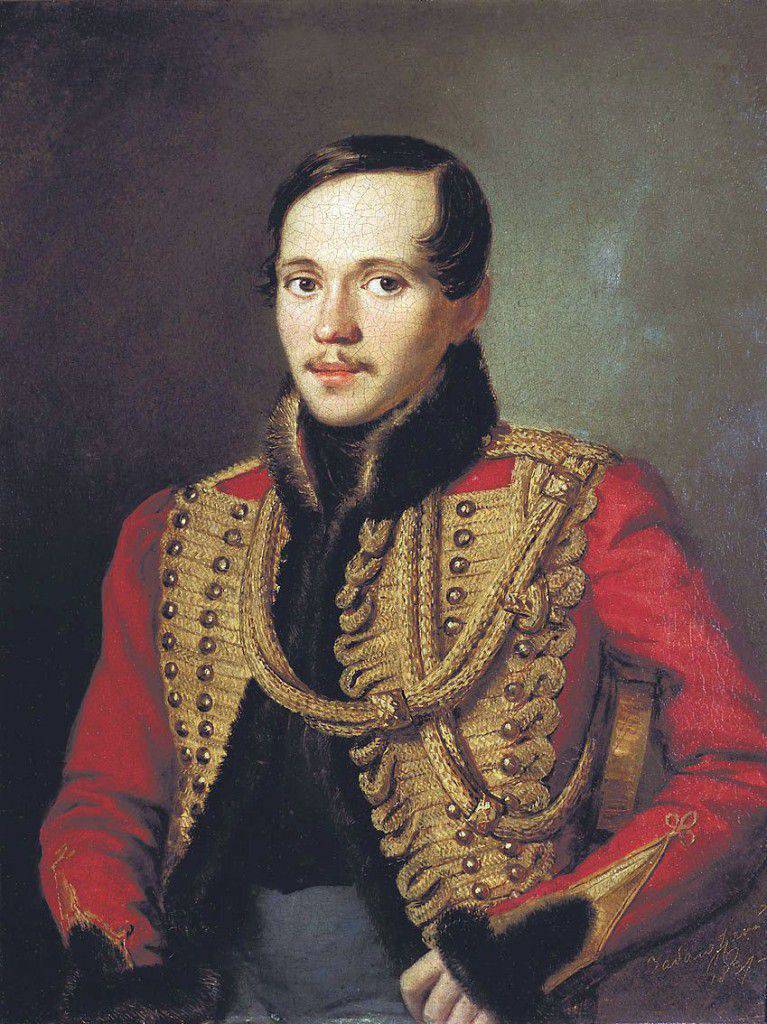
The turn of the century was marked for Poland in three sections. From 1807 to 1813, the central part of it, that is, Polish lands proper, existed under the name of the Duchy of Warsaw. At the head of this restless neoplasm, Napoleon, then omnipotent to the west of the Nemunas and the Bug after the Peace of Tilsit, again set the Saxon and, by a funny coincidence, also Friedrich Augustus, who immediately resumed rewarding with the "eagle". True, now the cavaliers were exclusively enemies of Russia, like Marshal of France Jozef Ponyatovsky, nephew of the overthrown king Stanislav.
After the victory of the Russian weapons in Europe, Poland once again changed its owner - now in the status of "the king of Poland" our tsar Alexander controlled it. With the generosity of the winner, he retained for the Rzeczpospolita some independence, however, a ghostly one, including with respect to orders: the Russian tsar complained to them at his own discretion, but only to the local gentry. Nicholas I did away with this idyll: suppressing another Polish uprising, he ordered to introduce two Polish orders - the White Eagle and St. Stanislav - into the Russian award system, where the “eagle” took off quite high, being ranked below the Order of St. Alexander Nevsky.
In this regard, the Order received a new design, quite remarkable.
"The tape is dark blue; there is a badge of order hanging on it depicting a black, crowned, double-headed eagle with golden heads, necks twisted, and wings and tail encircled with gold, on the chest there is a red enamel cross lying on a golden star with three narrow stripes about it, two of which are golden and medium silver; on the sharp corners of the cross there are small golden balls, and between them in the middle are small semicircles; on the cross, supported by a double-headed eagle, there is a white single-headed eagle, facing to the right, having a small golden crown on its head. ”
Thus, the Polish eagle was itself, like an order, on the chest of a Russian eagle.
In addition, the Order had a golden star; in the middle of the star is a fiery cross, having at the edges three narrow strips, of which the middle is red and the other two are gold; around him, on the blue broad band is the motto: “Pro Fide, Rege et Lege (For Faith, Tsar and Law)”.
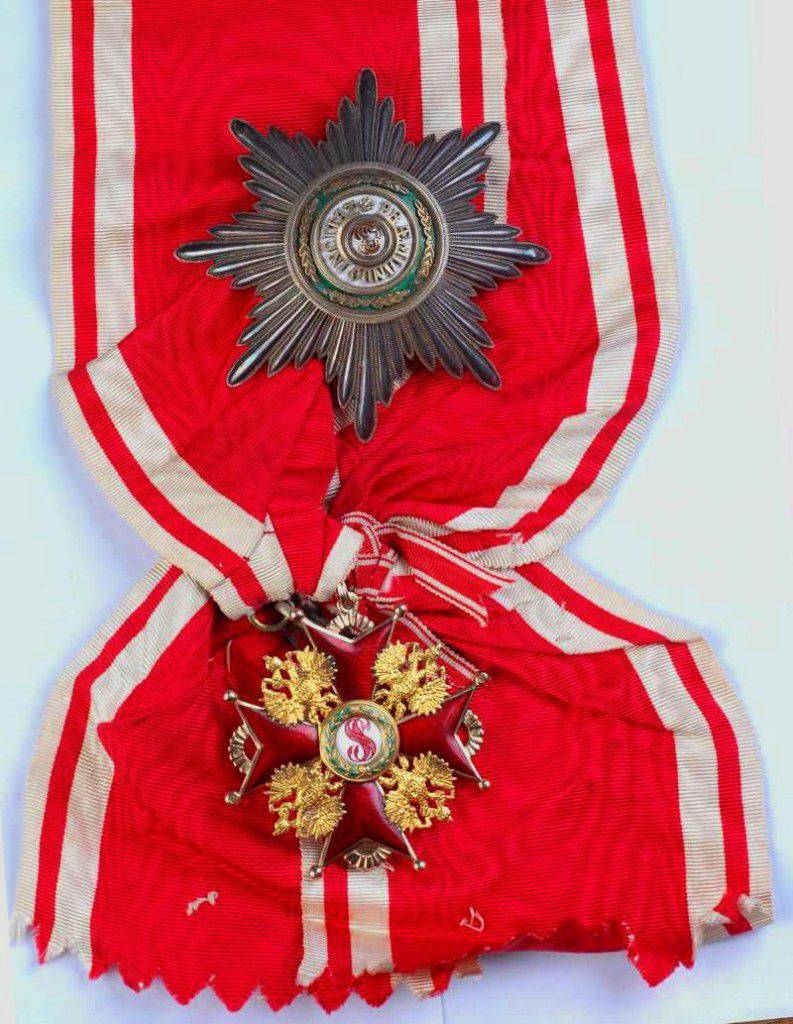
Actually, the motto remains the same, but we will not attribute Augustus II to excessive insight, because the rege from Latin can be translated as “king” and as “king” - depending on the circumstances.
"When he complains about the deeds of the military against the enemy, they join the signs of this order two by one, crosswise, of the sword: on the top of the sign under the crown, and on the star so that the middle shield covers the intersection of swords." Here we linger. Of the four thousand people awarded the Order of the White Eagle from 1831 to 1917 a year, only 129 received awards for military merit.
"Two, lying crosswise, sword" added in 1855-m, at the height of the Crimean War. It was this type of order that the great defender of Sevastopol, Admiral Pavel Stepanovich Nakhimov, relied upon. But the naval commander didn’t manage to get his combat “eagle”: on June 28 he was seriously wounded on the Malakhov Kurgan and two days later died in the hands of another great Russian, the surgeon Nikolai Ivanovich Pirogov. That is why on numerous monuments of Nakhimov is depicted with the cross of St. George of 2 class on the neck - for the Sinop victory.
But “White Eagle” “with swords” decorated his uniform filled with gold (not with court sewing, of course, but with deserved crosses and stars), Alexey Petrovich Yermolov, the hero of the Patriotic and Caucasian wars. The general had to fork out, because when awarding swords to the Order of the White Eagle, one hundred and fifty rubles were levied. This is in addition to three hundred more for the order itself, despite the fact that the annual pension for cavaliers did not rely. Well, yes Yermolov had a lot of other, in the good "pension" awards.
But there were gentlemen and people especially peaceful professions. For example, Hovhannes Ayvazyan - yes, our famous painter Ivan Konstantinovich Aivazovsky! The author of the “Singer in the camp of Russian warriors,” Vasily Andreyevich Zhukovsky, was also among those awarded. This award was for the latter, spoiled by both Russian and foreign orders of the poet (he, however, more appreciated his first order - the “Holy Anna” 1812 class received in November of the formidable 2). And from the people of conventionally non-creative we call Dmitry Ivanovich Mendeleev. Although, they say, the periodic table occurred to its author as the plot of the picture - to some mystically-minded artist: in a dream.
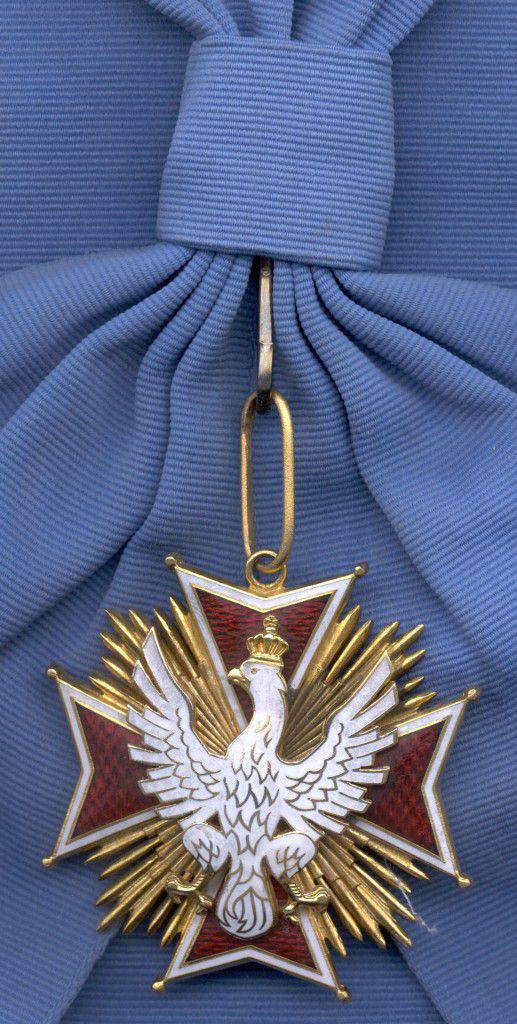
And now back to Poland, during the reign of Stanislav Ponyatovsky.
Loved, oh, how the kings and kings loved to add shine and glory to themselves! It was not enough for Peter the Great to cut a window to Europe, so he also instituted the Order of St. Catherine - in honor of his wife, who was re-crossed in Katya Marta Skavronskaya. And Holstein duke Karl Ulrich, referring to podolstitsya to the Russian ruler Anna Ioannovna, very incidentally remembered the grandmother of Christ, St. Anne. As for Poniatowski, it is still more successfully coincided.
He lived in the XI century, killed right during the service by King Boleslaw the Brave (well, the Poles were able to give their rulers nicknames at all times!) And Krakow’s bishop Stanislav, who was already considered to be the heavenly patron of all Poland, and not only the last monarch.
Adopted in the same memorable 1831 year in the chapter of the Russian orders, the Order of St. Stanislav became the youngest in rank and the most common award: before the fall of the Russian Empire in 1917, they were decorated with hundreds of thousands of loyal subjects.
Anyone who has ever been to the Tretyakov Gallery, undoubtedly (if he, of course, has the slightest artistic taste), admired there paintings by Pavel Fedotov, the founder of critical realism in Russian painting. “Widow”, “Major's Matchmaking,” “Anchor, Another Anchor!”, “Breakfast of the Aristocrat” ... Among these masterpieces a small canvas “A Fresh Cavalier” looks worthy. Barefoot, in a greasy gown and file-caps, sticking out his lower lip and chest, the hero of this picture boasts to his serf girl (presumably from him and pregnant) just received the order - the cross of St. Stanislav.
Something, however, is not clear in this picture, if you do not know that in 1845, the awarding of 2 and 3 classes to the order was suspended due to the grumbling that arose among the indigenous Russian nobility. The reason for discontent was as follows. The award of even the lowest degree of “St. Stanislav” (and the “fresh cavalier” demonstrates her, third degree) automatically raised the awarded person to a noble dignity, which could also be inherited. The number of such “new nobles” of merchants and commoners increased massively, which the owners of more “blue” blood did not like. It was one of such rootless upstarts that Fedotov, who came from an impoverished family, but, I suppose, a proud titular adviser, depicted in 1847, in his picture.
With 1855, the rewarding of all grades was resumed, but the hereditary nobility was now given only to owners of orders of the 1 class (which Sevastopol received, by the way, the already mentioned surgeon Pirogov).
His description and confine. “The cross is gold, covered with a red enamel on the front side, about four ends, each of which is further divided into two sharp ends; on the edges of the whole cross is a double golden border; on eight sharp ends gold balls; and between these ends, in their combination, are golden semi-circles, having the form of striped shells; in the middle, on a white enamel round shield encircled by a gold border, with a wreath green on it, the Latin monogram of St. Stanislaus, red: SS; and near the shield at the corners of the cross, on four sides, are golden Russian double-headed eagles. The back side of the cross is all gold with a white enamel, round, in the middle, a shield, on which is depicted the same monogram SS. ”
This "Saint Stanislav" was worn on "a red wavy ribbon, two and a half inches wide, with a double white border on both sides, through the right shoulder, with a star, on the left side of the chest." “The silver star, about eight rays, relied upon him; in the middle there is a large white round shield surrounded by a wide green stripe with two golden edges on both sides, the inner one of which is narrower and the outer one wider; on a green strip, laurel golden branches, connected in the middle of each by two flowers; in the middle of the shield, in a small golden hoop, in red letters the monogram of St. Stanislav: SS; and around the hoop, in a white field, in golden letters, the Order's motto: Praemiando incitat (rewarding encourages), divided above by a golden flower. ”
As we have said, until 1845, any degree of the order gave the right to hereditary nobility. But there were people who did not need either the nobility or the annual pension, looking only for immortality and fame.
Remember where these lines come from?
... on the overcoat
Back to the tree, lay
Their captain. He was dying.
His chest barely blackened.
Two wounds, his blood slightly
It oozed. But high chest
And it was difficult to rise; eyes
Wandered scared, he whispered:
“Save, brothers. Drag in the mountains.
Wait, the general is wounded ...
They don't hear ... ”He moaned for a long time,
But weaker, and little by little
Calm down and gave the soul to God.
On guns leaning around
Gray mustaches were standing ...
And wept quietly ...
This is “Valerik” by Mikhail Lermontov.
The poet wrote firsthand - he himself participated in that battle with the mountaineers and showed himself to be a real hero. According to the official report, “The Tenginsky Infantry Regiment, Lieutenant Lermontov, during the assault on the enemy’s obstructions on the Valerik River, had the task to observe the actions of the advanced assault convoy and notify the head of the detachment of its successes, which was fraught with the greatest danger for him from the enemy, who was hiding in the forest for the trees and bushes. But this officer, in spite of all dangers, carried out the mission entrusted to him with excellent courage and composure, and with the first ranks of the bravest soldiers broke into the enemy’s rubble. ”
A direct witness clarifies and colors the picture: “The Chechens at once chopped up a side chain and rushed at the cannon. At that moment, Mamatsev (the commander of the threatened Russian battery. - M.L.) saw Lermontov near him, who had grown out of the ground with his team. And how good he was in a red silk shirt with an oblique, unbuttoned collar; a hand gripped the dagger's hilt. Both he and his hunters, like tigers, were guarding the moment to rush at the highlanders, if they had reached the guns. ”
The brave lieutenant was introduced by the commander, General Apollo Galafeev, to the Order of Saint Vladimir of the VI degree with a bow (a special distinction for the military). The superiors, reinsuring, replaced "Vladimir" with "Stanislav" III degree (I think they would have asked for the IV degree, but a year before, in 1839, they eliminated it). However, Nicholas I still struck out the name of the disgraced poet from the award list, the news of what caused Lermontov to once again have a discharge of bile: “I don’t envy either your orders or your flexible backs; I do not envy what you have become through cashing and cringing.
Enjoy the happiness of your servility, this is the order of things; what one wears in his chest, the other wears on his chest. " Rude and unfair, of course.
The October Revolution, however, seemed to meet the poet who had predicted it, abolishing all the imperial orders at once. "Stanislav" remained the dynastic reward of the Romanovs, stinging them to this day. But the "White Eagle" returned to his homeland, in Poland.
There he is, perhaps, the place.

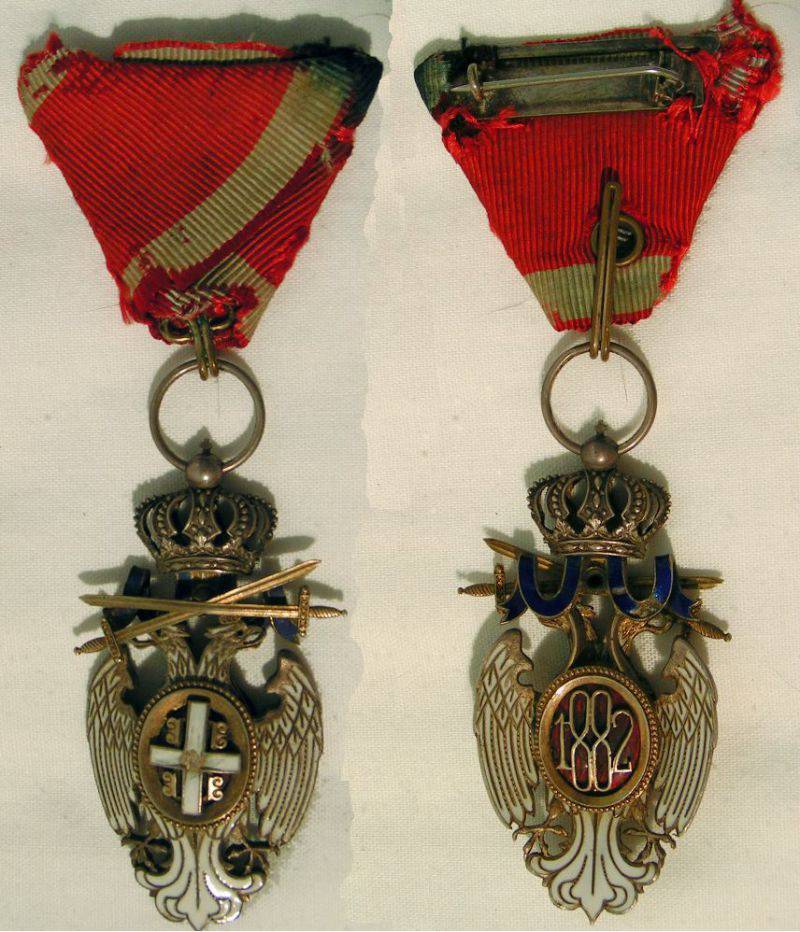
Information